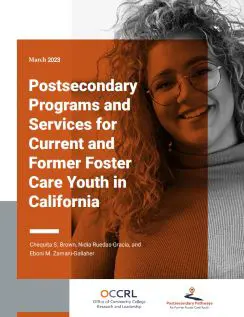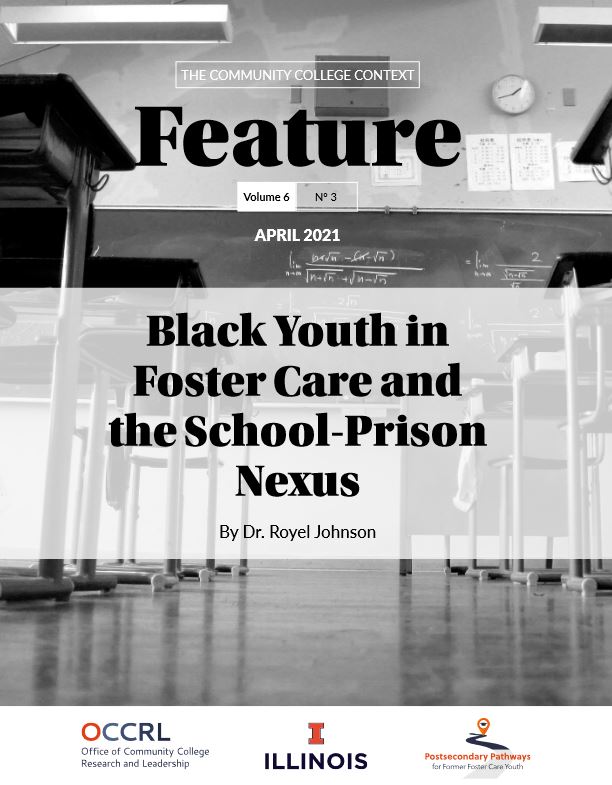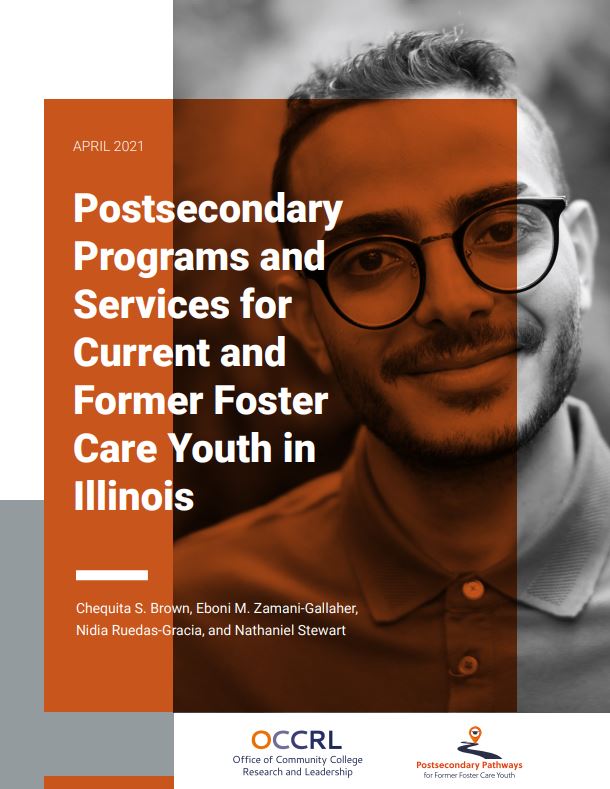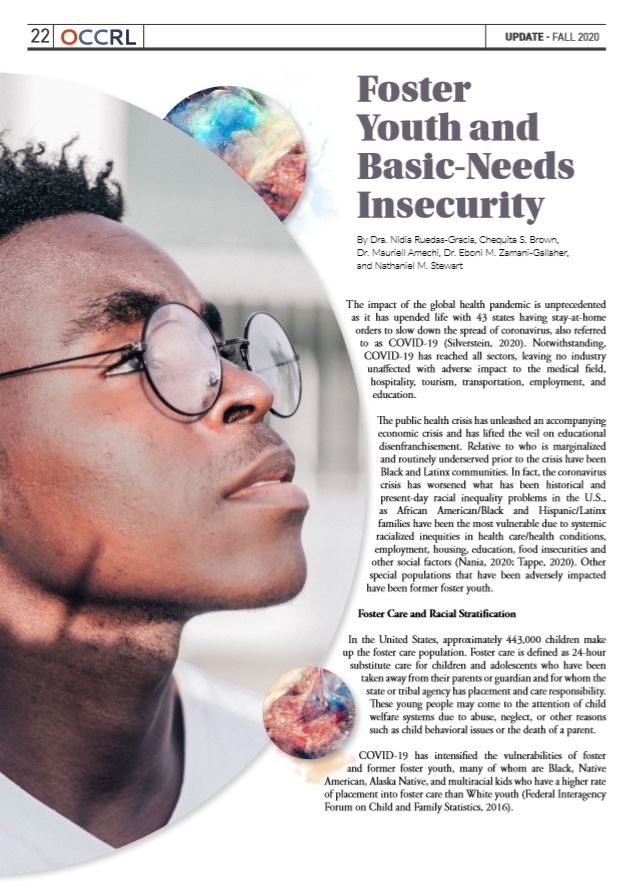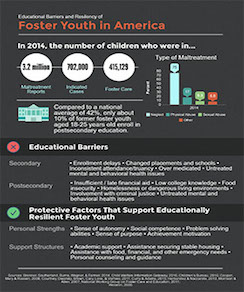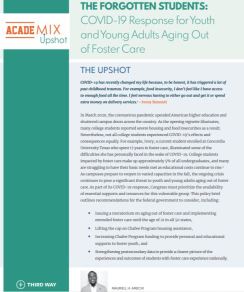
Postsecondary Pathways - for Former Foster Care Youth
This project has been completed and is no longer active.
However, we hope you are able to utilize its resources.
The Postsecondary Pathways for Former Foster Care Youth (PP-FFCY) reflects OCCRL’s commitment to examining and developing postsecondary pathways that support mobility for first-generation, underserved, and minoritized populations, as well as strengthening career pathways to promote seamless transitions from college to careers. This project endeavors to examine postsecondary access, opportunities, and supports for foster youth in Illinois and other states across the county in addressing access and outcomes of FFCY in Career Technical Education (CTE).
Purpose
The Postsecondary Education Pathways for Former Foster Care Youth (PP-FFCY) project is an exploratory study focused on postsecondary pathways for current and former foster youth in Illinois. OCCRL is conducting a comprehensive-needs assessment that provides a descriptive profile of current and former foster youth populations in Illinois; examines postsecondary access, opportunities, and supports for foster youth in Illinois; and addresses disparities in career and technical education (CTE) programs. This project reflects OCCRL’s commitment to examining and developing postsecondary pathways that support mobility for first-generation, underserved, and minoritized populations as well as strengthening and supporting career pathways to promote seamless transitions from college to careers.
Resources
OCCRL aims to increase postsecondary awareness, access, and attainment for current and former foster care youth by providing information on programs and other resources that offer holistic support and services. View the list of postsecondary programs and services.
Strategies to Cultivate a Foster-Friendly Culture on Community College Campuses
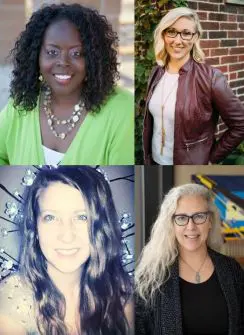 In this episode, Chequita Brown talks with Kate Danielson of the organization Foster Progress, as well as with Anna Wandtke and Tricia Wagner of Rock Valley College in Rockford, Illinois. The group discusses how to cultivate a foster-friendly culture at Illinois community colleges.
In this episode, Chequita Brown talks with Kate Danielson of the organization Foster Progress, as well as with Anna Wandtke and Tricia Wagner of Rock Valley College in Rockford, Illinois. The group discusses how to cultivate a foster-friendly culture at Illinois community colleges.
Navigating College as a Foster Care Alum
 In this episode, OCCRL research assistant Chequita S. Brown talks with Jonathan Stacy, a sophomore at Heartland Community College who is pursuing his studies and a possible career in criminal justice.
In this episode, OCCRL research assistant Chequita S. Brown talks with Jonathan Stacy, a sophomore at Heartland Community College who is pursuing his studies and a possible career in criminal justice.
Listen to the podcast and view the transcript.
Key Elements to Successfully Connecting Foster Care Youth to Educational Resources for Postsecondary Success
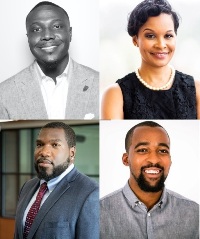 In this episode, Nathaniel Stewart talks with Mauriell Amechi, Regina Gavin Williams, and Blayne Stone Jr. about how the transitions and pathways to postsecondary education are similar and different for Black former foster care students. The scholars also discuss key elements to successfully connect foster care youth to educational resources that help advance the postsecondary education opportunities for this student population.
In this episode, Nathaniel Stewart talks with Mauriell Amechi, Regina Gavin Williams, and Blayne Stone Jr. about how the transitions and pathways to postsecondary education are similar and different for Black former foster care students. The scholars also discuss key elements to successfully connect foster care youth to educational resources that help advance the postsecondary education opportunities for this student population.
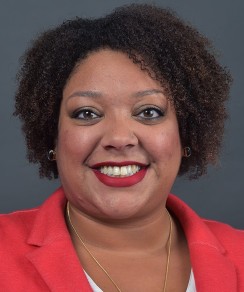
Maddy Day
The Impact of Campus-Based Support Programming on Foster Care Collegians' Postsecondary Access and Retention
In this episode, Chequita Brown of OCCRL talks with Maddy Day about the Fostering Success initiative in Michigan and the impact of campus-based support programming on foster carecollegians' postsecondary access and retention.
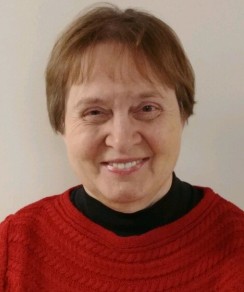
Patricia Palmer
How Youth-in-Care in Illinois Can Access Educational Resources to Pursue a Postsecondary Education
In this episode, OCCRL research assistant Chequita Brown continues the conversation on foster care youth by talking about with Patricia Palmer about accessing available resources in Illinois for youth-in-care who want to pursue a postsecondary education.

Nidia Ruedas-Gracia
Conceptualizing 'Sense of Belonging' Among Students From Historically Minoritized Racial Groups Within Higher Education
In this episode, Colvin Georges Jr., a research associate at OCCRL, talks with Dr. Nidia Ruedas-Gracia about what it means to have a sense of belonging and discusses her research in this area. They also discuss how a sense of belonging affects college students from historically minoritized racial groups.
Postsecondary Programs and Services for Current and Former Foster Care Youth in California
By Chequita S. Brown, Nidia Ruedas-Gracia, and Eboni M. Zamani-Gallaher
This brief highlights postsecondary programs and services in California that support youth in care, in addition to young adults who are aging out of foster care. Read more.
Tracking College-to-Career Pathways for Foster Youth
By Chequita S. Brown
In this OCCRL Thought Paper, Chequita S. Brown relates how tracking the data of students with foster care experience helps to recognize them as a legitimate student population. She offers recommendations on how to do this and conveys the many obstacles that can hinder the academic and career success of foster youth. Read more.
Black Youth in Foster and the School-Prison Nexus
By Royel Johnson
In this OCCRL Feature Brief, Dr. Royel Johnson argues that the foster care system, and more specifically congregate care facilities, are part and parcel to the enhancement of carceral state power. Read more.
Postsecondary Programs and Services for Current and Former Foster Care Youth in Illinois
By Chequita S. Brown, Eboni Zamani-Gallaher, Nidia Ruedas-Gracia, and Nathaniel M. Stewart
This research brief provides an overview of programs and services that helps strengthen postsecondary pathways for current and former foster youth in Illinois. Read more.
Foster Youth and Basic-Needs Insecurity
By Dra. Nidia Ruedas-Gracia, Chequita S. Brown, Dr. Mauriell Amechi, Dr. Eboni Zamani-Gallaher, and Nathaniel M. Stewart
This article discusses how COVID-19 has intensified the vulnerabilities of foster youth and former foster youth, many of whom are Black, Native American, Alaska Native, and multiracial children who have a higher rate of placement into foster care than White youth (Federal Interagency Forum on Child and Family Statistics, 2016). Read more.
(From the Fall 2020 UPDATE on Research and Leadership)
Exploring Equity in Postsecondary Education
By Heather L. Fox, Eboni M. Zamani-Gallaher
This chapter examines how postsecondary practitioners are encouraged to work collaboratively with child welfare agencies and other community-based organizations to identify and implement culturally responsive supports for former foster youth to promote early academic achievement. Read more.
The Forgotten Students: COVID-19 Response for Youth and Young Adults Aging Out of Foster Care
By Mauriell H. Amechi
This policy brief outlines recommendations for Congress to consider regarding the country's COVID-19 response, in an effort to prioritize the availability of essential supports and resources for youth and young adults who are aging out of foster care. Read more.
BILT Strengthens Pathways From High School to Postsecondary and Beyond
On October 15, 2021, the National Career Pathways Network (NCPN) hosted a webinar titled “Supporting High School to Community College Pathways with High Employer Engagement.” This was a virtual space in which panelists discussed a uniquely developed Business and Industry Leadership Team (BILT) model. As described on the NCPN website,
“The National Convergence Technology Center (NCTC) has developed the Business and Industry Leadership Team (BILT) model, which formalizes co-leadership between business and educators to align curriculum with workforce needs while developing a highly-engaged employer team. This model can be used to support high school to community college (and beyond) pathways” (NCPN webinar series, 2021).
BILT serves as an intensified business-advisory council consisting of employers, faculty, and possibly students to discuss pathways from high school to community college to four-year institutions to the workforce. NCPN also presented two technical college administrators as panelists to discuss how implementing BILT models into their institutions have spurred success for students and faculty.
The webinar was extremely informative as attendees were able to hear from the BILT creator herself, Ann Beheler, who offered insights on what BILT is and how it functions. She said, “A BILT is a business advisory council on steroids” (NCPN webinar series, 2021). It essentially bridges the gap among local workforce industries, technical colleges, and high schools, creating a high school-to-workforce pathway that is fueled by the support and insights from future employers and corporations.
As described by Mark Dempsey, NCTC’s assistant director, BILT is “assemble, convene, schedule, invite, prioritize, and give feedback” (NCPN webinar series, 2021). Members of corporations who hope to be future employers for local students sit on a board in which they discuss and vote on specific entry-level knowledge, skills, and abilities that technical colleges must provide to develop workforce-ready job candidates. By convening in a caucus-like atmosphere, employers, technical school faculty members, high school instructors, and students can elaborate on how to make technical programs as beneficial as possible, stimulating graduates who are ready for the workforce. Due to the involvement of industry leaders with student and professional development, these corporations recruit and hire said students at a higher priority, strengthening the pathway.
Beheler explained that BILTs “can work at any technical program at any size, employers are able to connect with a pipeline of workforce-ready candidates, faculty has assurance they’re teaching skills that the workforce demands, students are the first to be considered for jobs, and programs develop a pool of industry-expert advisors that will support all aspects of said technical programs” (NCPN webinar series, 2021).
Doug Hamm, of Lakeshore Technical College in Wisconsin, and Kyle Jones, of Sinclair College in Ohio, discussed ways in which their institutions have benefitted from using BILT models. Lakeshore, in correspondence with its BILT, provides high school students with the opportunity to begin dual-credit enrollment in its IT program, ensuring their credits equate to a full associate’s degree upon completion and spurring workforce-ready graduates. Students also have the option to finish their program at Lakeshore, or to attend Lakeshore first and then matriculate into a four-year institution for completion. Lakeshore contains multiple articulation agreements with various schools throughout Wisconsin, according to Hamm.
Sinclair College also offers a dual-credit program, in which local high school teachers instruct students to attain college credit. The school also provides training for teachers who want to become certified instructors in the field. Jones said that BILT members are likely to recruit and hire students who are a part of this pathway network, as they have had a first-person relationship with students who are ready to work for their company. Jones listed Kroger and Macy’s as examples of partnered companies used in the past. Lakeshore offers full college credit at no cost to stimulate access to underrepresented communities in the IT industry, while Sinclair provides free transportation to recruitment events so that discrepancies in access are not an issue.
As described on the OCCRL Pathways to Results (PTR) website, PTR “strives to improve student transitions that occur to and through postsecondary education and into employment." The BILT model follows these goals because it serves as a liaison between employers, colleges, and high schools to establish and strengthen pathways. By meeting regularly and discussing the pitfalls and successes of the pathways thus far, we will continue to see them strengthen for the upcoming generations of students, graduates, and employed individuals of society.
References
Pathways to Results (PTR). OCCRL. (n.d.). Retrieved October 27, 2021.
Supporting High School to Community College Pathways with High Employer Engagement. 2021 NCPN webinar series - professional development. (2021, October 15). Retrieved October 27, 2021, from https://www.ncpn.info/webinars.php.
